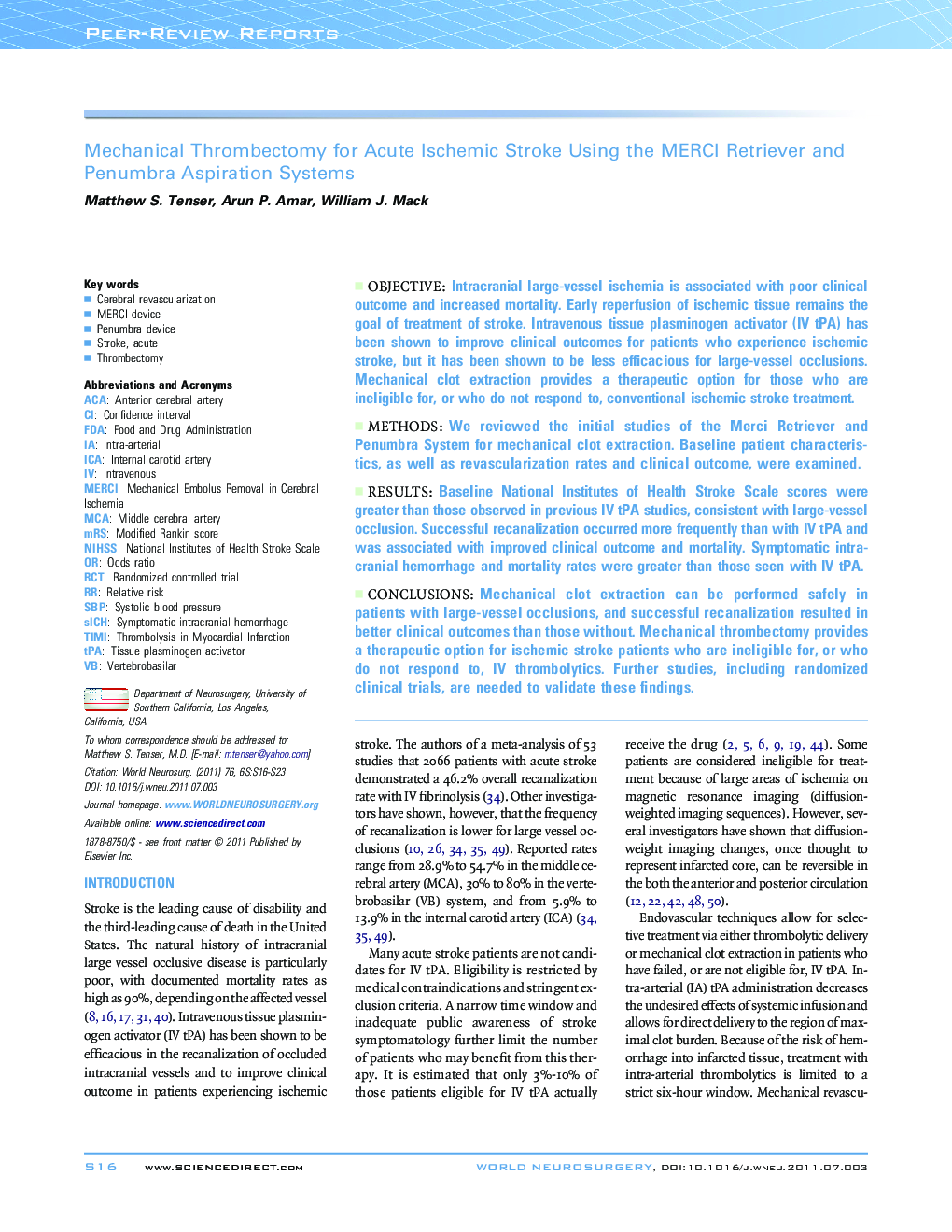| Article ID | Journal | Published Year | Pages | File Type |
|---|---|---|---|---|
| 3097577 | World Neurosurgery | 2011 | 8 Pages |
ObjectiveIntracranial large-vessel ischemia is associated with poor clinical outcome and increased mortality. Early reperfusion of ischemic tissue remains the goal of treatment of stroke. Intravenous tissue plasminogen activator (IV tPA) has been shown to improve clinical outcomes for patients who experience ischemic stroke, but it has been shown to be less efficacious for large-vessel occlusions. Mechanical clot extraction provides a therapeutic option for those who are ineligible for, or who do not respond to, conventional ischemic stroke treatment.MethodsWe reviewed the initial studies of the Merci Retriever and Penumbra System for mechanical clot extraction. Baseline patient characteristics, as well as revascularization rates and clinical outcome, were examined.ResultsBaseline National Institutes of Health Stroke Scale scores were greater than those observed in previous IV tPA studies, consistent with large-vessel occlusion. Successful recanalization occurred more frequently than with IV tPA and was associated with improved clinical outcome and mortality. Symptomatic intracranial hemorrhage and mortality rates were greater than those seen with IV tPA.ConclusionsMechanical clot extraction can be performed safely in patients with large-vessel occlusions, and successful recanalization resulted in better clinical outcomes than those without. Mechanical thrombectomy provides a therapeutic option for ischemic stroke patients who are ineligible for, or who do not respond to, IV thrombolytics. Further studies, including randomized clinical trials, are needed to validate these findings.
